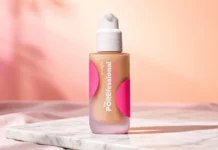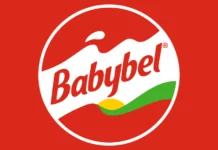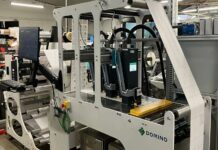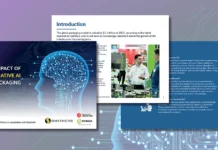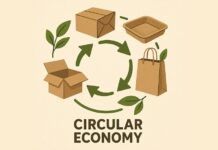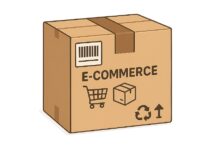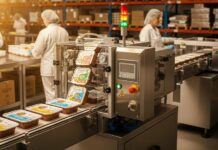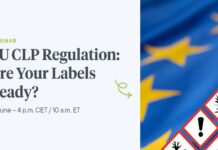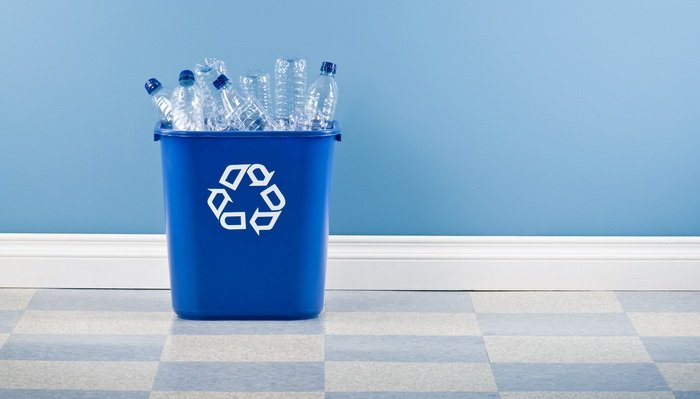In the face of escalating environmental concerns, many businesses are prioritizing sustainable practices to reduce their carbon footprints, with a strong focus on embracing recycled plastics in packaging. The global recycled plastics market is projected to grow significantly, achieving an estimated compound annual growth rate (CAGR) of 8.15% from 2024 to 2032, according to Inkwood Research. By incorporating recycled plastic materials into their supply chains, companies can not only support a circular economy but also significantly reduce greenhouse gas emissions. This guide explores the opportunities and strategies for manufacturers looking to adopt recycled plastics in their packaging, including a detailed look at the types of recycled plastics available, design considerations for functional packaging, and tools to measure carbon reduction impact.
Benefits of Recycled Plastics in Emission Reduction
The recycled plastics market offers substantial benefits for businesses aiming to decrease carbon emissions. Production of recycled plastics generally requires less energy than that of virgin plastics, thus lowering greenhouse gas emissions. According to the Ellen MacArthur Foundation, a global leader in promoting circular economy practices, using one metric ton of recycled plastic instead of virgin material can save between 1.5 to 3 metric tons of CO₂ emissions. This substantial difference underscores why recycled plastics are a prime choice for businesses dedicated to environmental sustainability.
Leading companies are already making strides by integrating recycled plastics into their supply chains. For example, Unilever has committed to reducing its virgin plastic usage by 50% by 2025, primarily by increasing the recycled content in its packaging. By substituting virgin plastics with recycled materials, Unilever aims to cut down on greenhouse gas emissions, supporting its sustainability objectives while meeting evolving consumer expectations for greener products.
Trending in the Recycled Plastics Market
The recycled plastics market is marked by rapid innovation and growing adoption, driven by regulatory pressures and consumer demand for sustainable products. Key trends shaping the market include the increased use of post-consumer recycled plastics, advancements in biodegradable options, and continuous improvements in product quality to meet the demands of the B2B packaging industry. As companies look to reduce their environmental impact, the move toward recycled plastics in packaging has proven beneficial for both brand reputation and regulatory compliance.
Top Types of Recycled Plastics in Packaging
Manufacturers have several types of recycled plastics at their disposal, each with distinct properties suited for different packaging requirements. Three primary types are currently popular in the recycled plastics market:
- Post-Consumer Recycled Plastics (PCR): PCR plastics are derived from previously used consumer products, such as water bottles and food containers, which are collected, cleaned, and reprocessed. Companies like Coca-Cola have invested heavily in using PCR in their bottles, aiming for 50% recycled content across all packaging by 2030. PCR plastics are central to a circular economy, giving products a second life and reducing reliance on virgin materials. By 2032, PCR is expected to account for 67.31% of the revenue in the global recycled plastics market, as noted by Inkwood Research.
- Post-Industrial Recycled Plastics (PIR): PIR plastics come from excess materials generated during manufacturing processes. Often used in industrial applications, these recycled plastics are valued for their strength and durability. Dow, for instance, has integrated PIR into its packaging, creating solutions that meet both functional and environmental standards.
- Biodegradable Recycled Plastics: Offering the dual benefit of recycling and compostability, biodegradable plastics are gaining traction, especially in sectors emphasizing eco-friendly disposal. Danimer Scientific, for example, produces biodegradable biopolymers, such as Nodax and PLA, which decompose naturally and meet ASTM and EN biodegradability standards. These polymers are also approved by the FDA for food contact and can fully degrade within three months in various composting environments.
Designing Durable and Sustainable Packaging
While recycled plastics offer clear environmental advantages, companies must ensure these materials can meet performance standards in packaging. Several factors are key when designing durable, sustainable packaging from recycled plastics:
- Material Strength: Packaging needs to endure the stresses of transport and storage. Advances in the recycled plastics market have improved the strength and durability of recycled materials, making it possible to replace virgin plastics in applications that previously depended on them. Companies like Sealed Air have successfully incorporated recycled content into their protective packaging products, including Bubble Wrap.
- Customization and Branding: With developments in colorants and printing techniques, recycled plastics now offer branding options comparable to those of virgin plastics. Companies such as Nestlé are using recycled materials that align with their branding goals, while also showcasing their commitment to sustainability. As of 2023, 41.5% of Nestlé’s packaging consisted of recycled or renewable materials, with further goals to achieve more than 95% recyclable plastic packaging by 2025.
- Regulatory Compliance: As plastic regulations tighten globally, recycled plastics help companies meet both sustainability targets and legal requirements. The European Union’s Single-Use Plastics Directive, for example, has compelled businesses to adopt more recycled content. According to Inkwood Research, Europe held a 39.72% revenue share in the recycled plastics market in 2023, a trend that is expected to continue due to stringent regulatory standards across the region.
Steps to Integrate Recycled Plastics into Supply Chains
For companies eager to incorporate recycled plastics, a structured approach is essential. Here’s a practical roadmap for adding recycled materials to packaging solutions:
- Identify Reliable Suppliers: Partnering with specialized suppliers is crucial. Loop Industries, for instance, offers recycled PET, providing a sustainable alternative to virgin plastic for companies focused on eco-friendly practices.
- Optimize Packaging Design: Redesign packaging to minimize plastic usage while maximizing recycled content. Procter & Gamble, for example, has reduced plastic in its Head & Shoulders bottles by 45%, allowing consumers to roll up the bottle like toothpaste, maximizing product use and reducing plastic waste.
- Assess Material Compatibility: Evaluate how recycled plastics perform in existing manufacturing processes to ensure a seamless transition that maintains product quality and functionality.
Tools and Metrics for Carbon Tracking
To quantify the environmental benefits of using recycled plastics, businesses can use specific tools to track carbon footprint reductions:
- Lifecycle Assessment (LCA): This analysis tool evaluates the environmental impact of products from resource extraction to disposal, providing insights into the emissions savings from using recycled plastics.
- Carbon Footprint Calculators: Tools like the Carbon Trust’s calculator help businesses measure the emissions saved through recycled content, guiding companies in setting and tracking reduction targets.
- Greenhouse Gas Protocol (GHG Protocol): Widely recognized for measuring and managing emissions, the GHG Protocol offers standards to document emissions reductions when switching to recycled materials.
Exploring Growth and Innovation in the Recycled Plastics Market
Incorporating recycled plastics into packaging not only helps manufacturers lower emissions but also aligns with regulatory requirements and consumer demand for sustainable products. As companies increasingly turn to PCR, PIR, and biodegradable options, they contribute to a more circular economy while maintaining the durability and functionality required for modern packaging.
The recycled plastics market offers a pathway to a more sustainable future. By adopting recycled materials, manufacturers can enhance eco-friendly branding, meet regulatory standards, and play a proactive role in reducing environmental impact. Equipped with the right metrics and strategies, businesses can confidently measure their impact, embracing recycled plastics as a vital part of a greener, more sustainable future.
In conclusion, the recycled plastics market is evolving rapidly as businesses shift toward circular solutions. Companies that integrate recycled materials can not only reduce their carbon footprint but also foster a brand image that resonates with environmentally conscious consumers. Through strategic partnerships, thoughtful design, and ongoing innovation, the transition to recycled plastics offers a promising route toward sustainability in packaging and beyond.




